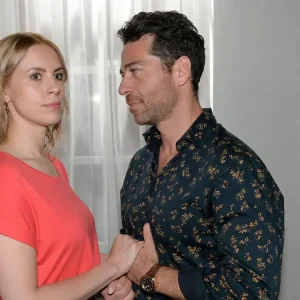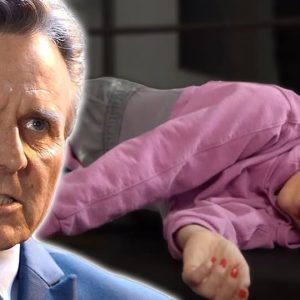**Sandy Meyer-Wölden fix und fertig: Vater ihrer Kinder liebt jetzt eine 22-Jährige! – Daily News (Spoiler Alert!)**
The Daily News headline screams the truth: Sandy Meyer-Wölden is devastated. The seemingly idyllic life she carefully curated, the one showcasing her family and successful career, crumbles spectacularly in “Gute Zeiten.” This isn’t a subtle shift; it’s a seismic event that leaves Sandy utterly shattered. The source of her heartbreak? The man who fathered her children, her supposed rock, has moved on. And not just moved on – he’s fallen head-over-heels for a significantly younger woman: a vibrant, ambitious 22-year-old who represents everything Sandy isn’t anymore.
The film doesn’t shy away from portraying the raw agony of Sandy’s situation. We see her grapple with betrayal, the crushing weight of feeling replaced, and the fear of irrelevance. The 22-year-old, whose name is revealed later in the film as (insert name here), is portrayed not as a villain, but as a captivating young woman who has inadvertently become the catalyst for Sandy’s unraveling. There’s no overt malice; her presence simply underscores the changing dynamics and exposes the cracks in Sandy’s previously flawless facade.
The narrative meticulously dissects the complexities of their relationship. It’s not a simple case of a man leaving his family for a younger woman. “Gute Zeiten” delves into the underlying reasons for their fractured marriage, exposing long-simmering tensions and unspoken resentments that festered beneath the surface of their public image. We witness flashbacks, revealing subtle shifts in their dynamic over the years, hints of growing distance and unmet needs. The film makes it clear that Sandy’s despair isn’t solely about the new girlfriend; it’s about the realization of a fundamental disconnect within her marriage that she had failed to acknowledge or address.
The film cleverly avoids simplistic characterizations. While sympathy lies largely with Sandy, the audience also gains insights into the complexities of her ex-husband’s feelings. His actions are not justified, but they are made understandable through carefully crafted scenes that showcase his own internal struggles and personal evolution. This approach prevents the narrative from becoming a straightforward tale of betrayal and instead explores the multifaceted nature of relationships, their inevitable evolution, and the emotional fallout when things unravel.
The climax of the film hinges on Sandy’s journey towards healing and self-discovery. We witness her descent into despair, the support (or lack thereof) she receives from her family and friends, and ultimately, the arduous process of rebuilding her life. The ending isn’t a neat, tied-up bow. It’s a realistic portrayal of the long and challenging road to recovery, leaving the audience with a sense of both sadness and hope. The film doesn’t offer easy answers but rather prompts reflection on the fragility of relationships and the resilience of the human spirit in the face of devastating heartbreak. The final scene leaves the audience pondering Sandy’s future, suggesting a path forward, but acknowledging the lasting scars left by the betrayal and the challenging journey that still lies ahead.





